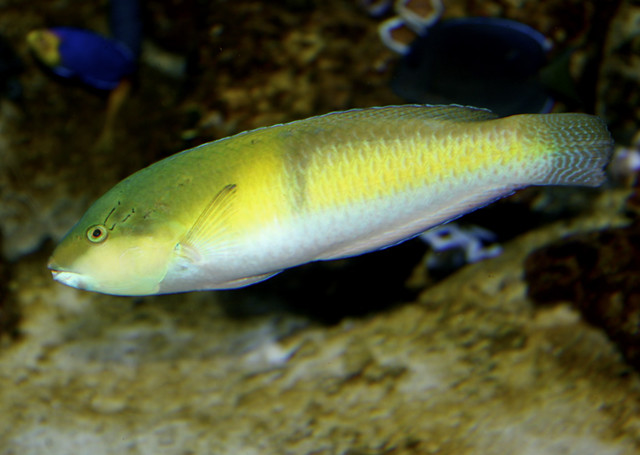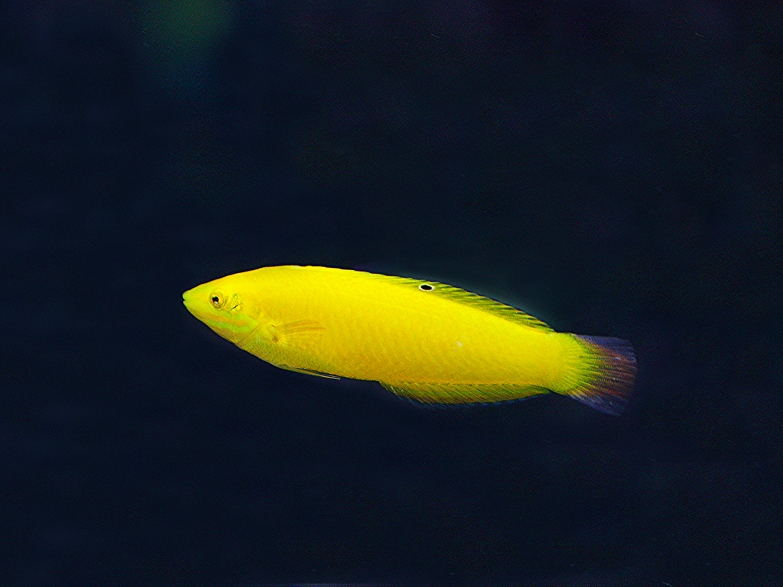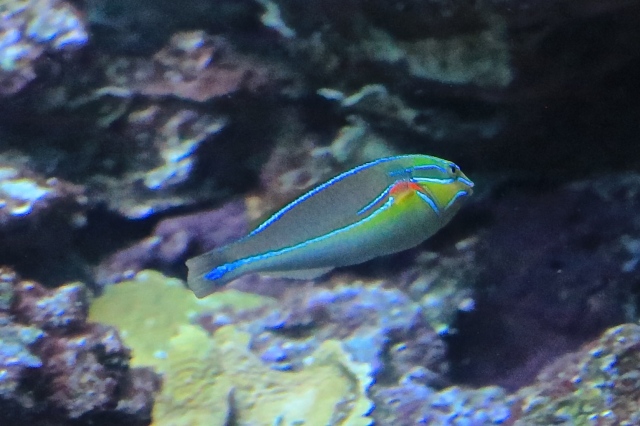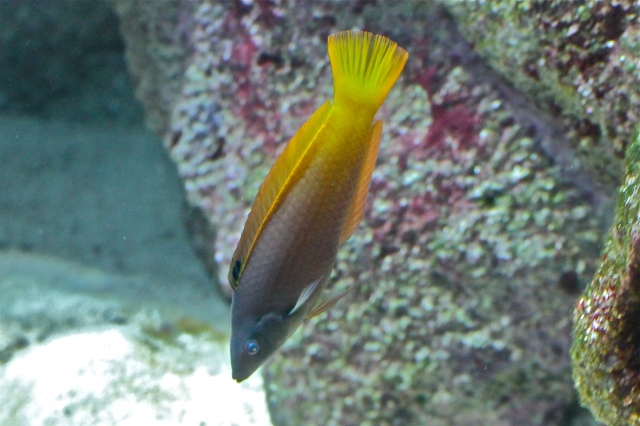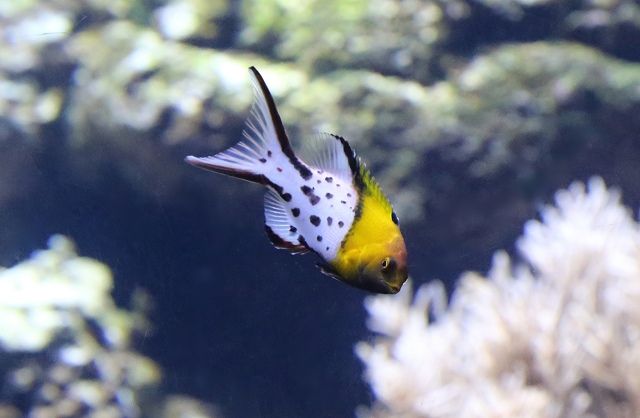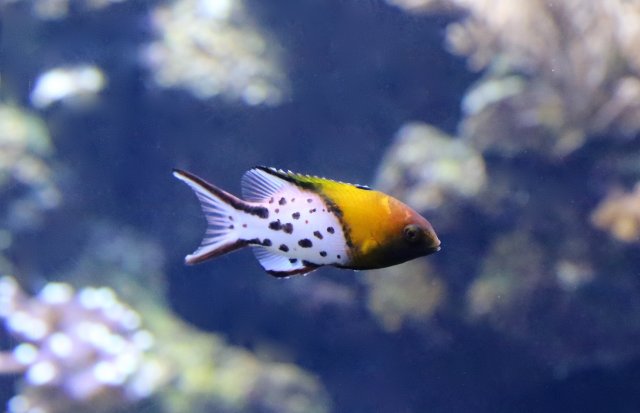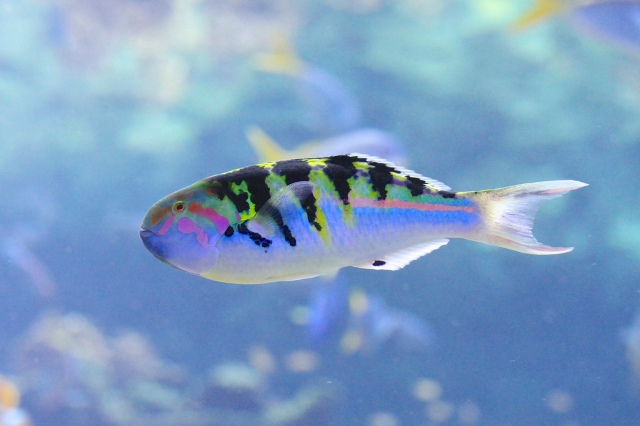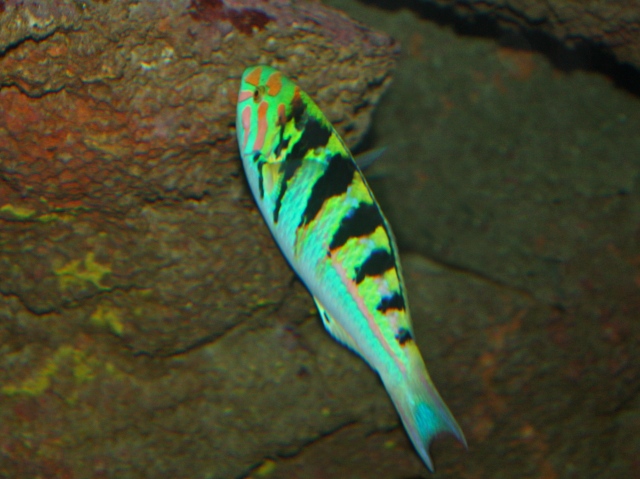TAXONOMY
Kingdom: Animalia
Phylum: Chordata
Class: Actinopterygii
Order: Perciformes
Family: Labridae (Wrasses)
Genus species: Halichoeres garnoti
.
GENERAL CHARACTERISTICS: All yellowed wrasses begin their lives as females. As they grow they change theirs and coloration. Adults are blue above the lateral line and have a yellow belly. Juveniles are yellow with a silvery blue stripe along the side. Super males (terminal males), have black vertical bar behind tip of pectoral fin, merging with broad black area on upper side.
Length up to 19 cm (7.5 in)
DISTRIBUTION/HABITAT: H. garnoti are native to the Western Atlantic; Bermuda and southern Florida to southeastern Brazil.
Commonly found on shallow and deep reefs and exposed ledges.
DIET IN THE WILD: Crustaceans, molluscs, worms, echinoderms.
REMARKS: Curious; easily attracted by divers. Diurnal; swim constantly during the day and rest at night.
References
California Academy of Sciences, Steinhart Aquarium Caribbean Reef 2018
Ron’s flickr https://www.flickr.com/photos/cas_docents/2958190043/in/album-72157625866509117/
Ron’s WordPress permalink https://www.flickr.com/photos/cas_docents/2958190043/in/album-72157625866509117/

